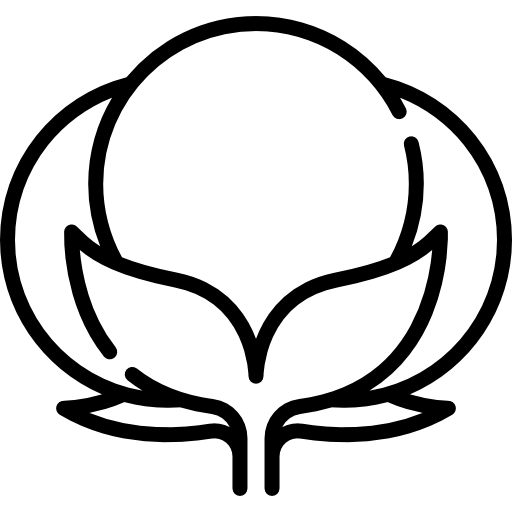A medida que se acerca la temporada de otoño, los apicultores necesitan cambiar su enfoque hacia la preparación de sus colmenas para los meses de invierno. poblaciones de abejas melíferas de otoño Desempeñan un papel crucial en este proceso, ya que dan origen a las abejas invernales que garantizan la supervivencia de la colonia durante las temperaturas más frías. Esta guía le ayudará a comprender los pasos necesarios para preparar sus poblaciones de abejas melíferas de otoño para la llegada de las abejas invernales y mantener su colmena sana durante el invierno.
Comprender las poblaciones de abejas melíferas de otoño y su comportamiento
El otoño marca un cambio significativo en el comportamiento de las abejas. A medida que las temperaturas empiezan a bajar, la actividad de las abejas disminuye y la puesta de huevos de la reina se reduce. Este cambio estacional en comportamiento de las abejas en otoño Es una señal para que los apicultores comiencen a prepararse para los meses más fríos. A diferencia de la primavera y el verano, cuando el objetivo principal de la colonia es recolectar alimento y expandirse, población de abejas melíferas de otoño Se centra en la conservación de energía y recursos.
Durante este período, es vital asegurar la salud de la colmena, ya que una población otoñal abundante sienta las bases para una invernada exitosa. El otoño es el momento en que la colonia comienza a producir. abejas de invierno , que son más grandes y viven más que sus contrapartes de verano.
El papel crucial de las abejas invernales en la supervivencia de la colmena
Abejas de invierno Son esenciales para la supervivencia de la colmena durante los meses fríos. A diferencia de las abejas de verano, que viven solo unas semanas, las abejas de invierno pueden vivir meses, manteniendo la colmena caliente y alimentándola hasta la primavera. Estas abejas están especialmente adaptadas para agruparse alrededor de la reina y mantener la temperatura de la colmena.
La producción de abejas invernales comienza con la población de otoño, por lo que es crucial monitorear la salud de la colmena y asegurar su robustez. Sin abejas invernales sanas, la colmena podría no sobrevivir al invierno, por lo que preparar a las abejas melíferas de otoño para esta transición es crucial.
Evaluación de la salud de la colmena antes del invierno
A control de salud de la colmena Es un paso importante en el proceso de preparación. Antes de que llegue el invierno, debe inspeccionar su colmena para detectar plagas, enfermedades y la presencia de una reina sana. Una colmena débil o enferma en otoño puede provocar un invierno desastroso, ya que las abejas invernales no podrán cuidar adecuadamente de la colonia si no está en buen estado.
Busque señales de Ácaros varroa , loque u otras enfermedades, y tomar las medidas necesarias para tratarlas. Asegurarse de que la reina siga poniendo huevos, aunque sea a un ritmo reducido, también es esencial para mantener salud de la colmena A medida que la colonia pasa al invierno.
Cómo desarrollar abejas invernales fuertes a partir de poblaciones otoñales
Para garantizar el desarrollo de capacidades fuertes Abejas invernales : es importante tomar medidas que favorezcan la población otoñal. Una colmena bien alimentada y sin estrés producirá abejas invernales más sanas. Aumento de las poblaciones de abejas en invierno comienza por reducir el estrés de la colmena evitando inspecciones y perturbaciones innecesarias durante el otoño.
Además, controlar la producción de cría es fundamental. Al asegurar que la reina ponga huevos hasta bien entrado el otoño, se puede asegurar que suficientes abejas jóvenes maduren. abejas de invierno Capaz de mantener el calor y la energía de la colmena durante el invierno.
Preparación de la colmena para la hibernación
A medida que se acerca el invierno, Preparación de la colmena para clima frío se convierte en una prioridad. Los apicultores deben tomar medidas para Aísle la colmena , reduzca las entradas y asegure que la colonia tenga suficientes reservas de alimento. Aislar la colmena ayuda a mantener una temperatura estable y previene corrientes de aire que podrían debilitar la colonia.
Aislamiento de colmenas Es especialmente importante en climas más fríos, donde las abejas necesitan protección adicional contra los elementos. Reducir las entradas a la colmena también puede ayudar, ya que impide la entrada de aire frío, lo que facilita que las abejas invernales mantengan la colonia caliente.
Alimentación de las poblaciones de abejas melíferas de otoño para prepararlas para el invierno
Uno de los aspectos más importantes de la preparación poblaciones de abejas melíferas de otoño Para el invierno, es fundamental asegurarse de tener suficientes reservas de alimento. Si bien las abejas recolectan miel durante el verano, a menudo es necesario complementar su suministro de alimento en otoño. Abejas alimentándose en otoño garantiza que tengan las reservas de energía que necesitan para los meses de invierno.
Proporcionar jarabe de azúcar o fondant en el otoño puede ayudar a fortalecer la colmena y garantizar que haya suficientes recursos para apoyarla. Abejas invernales . Esto es especialmente importante si su colmena no produjo suficiente miel durante el verano o si cosechó miel que las abejas podrían necesitar para el invierno.
Monitoreo de las poblaciones de abejas melíferas de otoño para el éxito de las abejas en invierno
Incluso después de tomar estas medidas, es regular inspecciones de colmenas en otoño son cruciales para garantizar la salud continua de sus abejas. Al monitorear su población de abejas de otoño , puede detectar cualquier problema de último momento, como reservas bajas de alimentos o problemas de plagas, antes de que el invierno llegue por completo.
Vigile las reservas de alimento, verifique la presencia de la reina y esté atento a cualquier signo de enfermedad o plaga. Asegurar una población saludable en otoño es clave para... abejas de invierno La mejor posibilidad de supervivencia.

Protéjase todo el año con los trajes y chaquetas de apicultura OZarmour
En OZarmour, nuestros Trajes de apicultura y Las chaquetas de apicultura están diseñadas para brindar a los apicultores el máximo nivel de protección y comodidad durante todo el año. Ya sea que esté gestionando las poblaciones de abejas de otoño o preparándose para las abejas de invierno, nuestros trajes le garantizan seguridad durante las inspecciones de colmenas y las transiciones estacionales. Fabricadas con materiales duraderos y una ventilación superior, las prendas de apicultura de OZarmour están diseñadas para soportar condiciones adversas, manteniendo a los apicultores frescos y sin picaduras. Invertir en prendas de calidad es esencial tanto para apicultores principiantes como experimentados para cuidar eficazmente sus colmenas en cada temporada.
Conclusión:
Preparar las poblaciones de abejas melíferas de otoño para la llegada de las abejas invernales es esencial para la supervivencia de la colmena durante los meses más fríos. Al garantizar la salud de las abejas de otoño, criar abejas invernales fuertes y aislar adecuadamente la colmena, se prepara la colonia para el éxito. El monitoreo y la alimentación regulares son pasos cruciales para mantener la fortaleza de la colmena. Además, el uso de equipo de protección de calidad, como La armadura OZ ayuda a los apicultores a realizar estas tareas de forma segura y cómoda. Tomando las precauciones adecuadas, puede garantizar que su colmena prospere durante el invierno y la primavera.












